Delve into the world of “Sekihan” – not just a dish but a cherished tradition in the Land of the Rising Sun. This sticky, reddish rice, tinted by the rich hues of adzuki beans, is more than just a feast for the eyes and palate. It symbolizes celebration, good fortune, and the warm embrace of centuries-old customs in Japan. As you journey through this article, anticipate a flavorful blend of culinary insight, cultural history, and the special occasions that call for this delectable rice. Whether a food enthusiast or a cultural explorer, a rich knowledge serving awaits you.
What is Sekihan?
“Sekihan” (赤飯) is a traditional Japanese dish made of glutinous rice steamed with adzuki beans, which gives the rice a distinctive reddish color. The word “sekihan” can be translated as “red rice.” The rice is typically sticky and slightly sweet, with the beans providing a contrast in texture and a subtle bean flavor. Locals traditionally served this with a sprinkle of salt or gomashio (a mixture of salt and sesame seeds) on the side.
Osekihan
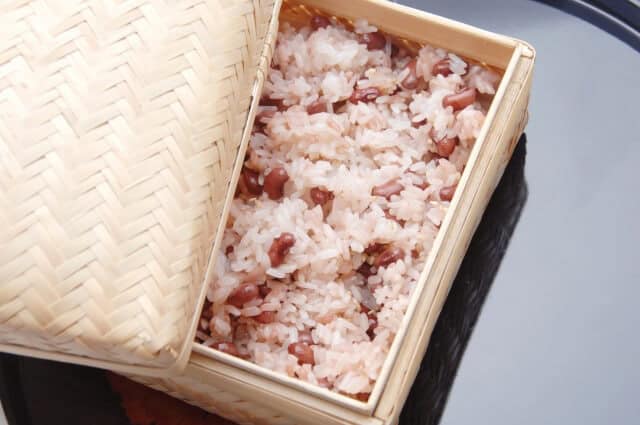
“Osekihan” (お赤飯) is essentially another term for “sekihan.” Most places use glutinous rice and adzuki beans or cowpeas as the ingredients. Still, it may vary depending on the region. Since it is not commonly eaten as a staple, it is classified as “okowa” made from steamed glutinous rice. The color of the adzuki beans and offering beans is transferred to the boiled juice, which is then absorbed into sticky rice, resulting in a reddish color overall.
Sekihan History
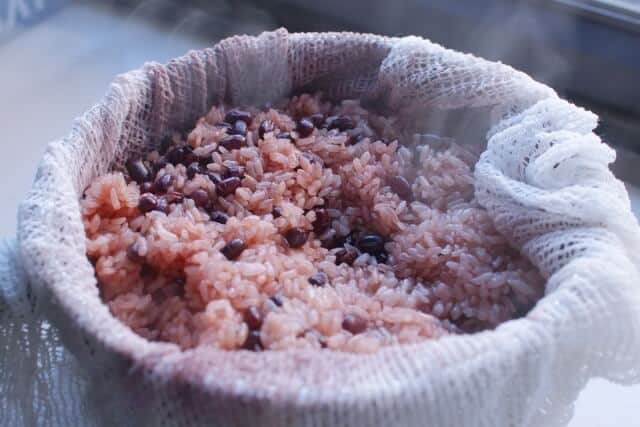
It has its roots in the middle of the Heian period, and the original form of sekihan is red bean porridge in the “Makura no Soshi” (The Pillow Book). They used this for celebratory occasions in the Muromachi period. In the latter half of the Edo period, it spread to the dining table of ordinary people on special occasions. Red rice (indica variety) was introduced to Japan from mainland China for the first time in the Jomon period. In Japan, red color have the power to ward off evil spirits. Since rice was a luxury food, there was a custom of cooking and offering red rice to the gods.
Most of the common people ate red rice until around the Edo period. Still, with the development of rice farming technology and selective breeding, it has changed to the present-day rice (Japonica variety), which has a good taste and stable yield. Yet, since the custom of offering red-colored rice remained deep-rooted, around the middle of the Edo period, white rice colored with azuki beans became popular as a substitute for sekihan (or red bean rice). The fact that locals considered sekihan good for health among the common people at that time and is one of the reasons why sekihan spread and has survived to the present day.
Hidden Meanings About Sekihan
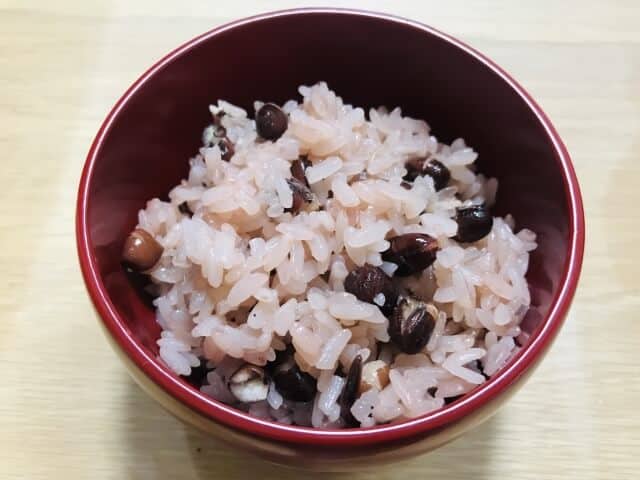
Sekihan began to be used for celebratory occasions in the latter half of the Edo period. Before that, sekihan was said to have been eaten with bad luck. There are various theories as to why sekihan came to be eaten on celebratory occasions. Still, in addition to the meaning of warding off misfortunes and evils with the power of red, it restore good luck by repaying bad things. Even now, in some areas, it is sometimes served at funerals.
What are the beans used in sekihan in different regions?
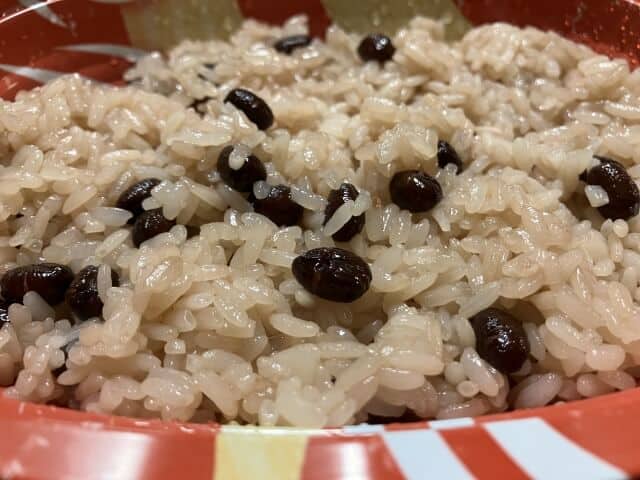
The beans used in sekihan are adzuki beans. The skin of azuki beans breaks when heated, and they sometimes fall apart when cooked. In some regional variations or recipes, cowpeas might also be used. Also, cowpeas have been widely used instead of adzuki beans in the Kanto region. The thin-skinned adzuki bean splitting in two did not favour the Kanto region. Cowpeas have thick skin and don’t crack as easily as red beans. This custom remains strong even today, and many places in the Kanto region use cowpeas for sekihan. On the other hand, in Yamanashi, there is “Amanatto no sekihan” (red rice cook with amanatto).
Health information about Sekihan
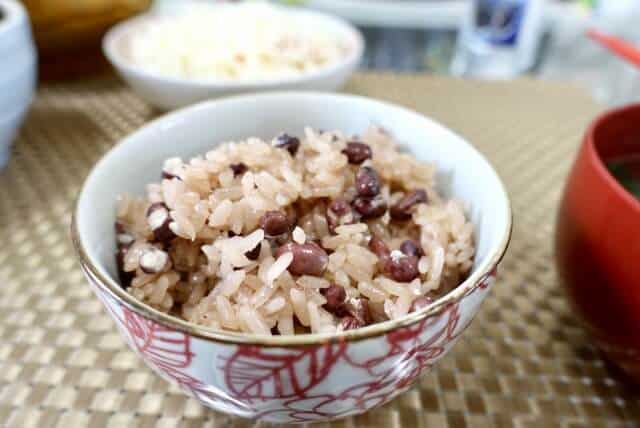
Sekihan, a revered Japanese dish of glutinous rice and adzuki beans, boasts many health benefits. Rich in protein for muscle building and tissue repair, adzuki beans provide essential dietary fiber, aiding digestion and stabilizing blood sugar levels. They’re a potent source of vital minerals like iron, oxygen transportation, and potassium, which benefit heart health. Moreover, these beans come with B vitamins, pivotal for energy metabolism and nervous system function, and antioxidants to combat oxidative stress. The glutinous rice offers steady energy and certain vitamins, complementing the fiber from the beans to enhance digestive health. Low in fat, sekihan is a nutritious option for vegetarians and vegans. Beyond its physical benefits, consuming sekihan in Japan carries cultural significance, symbolizing celebration and prosperity, elevating feelings of joy, societal connection, and cultural reverence.
Sekihan FAQ
- What is the red rice diet?
We also recommend the “sekihan diet,” where you eat sekihan instead of the usual white rice. Compared to white rice, sekihan is higher in carbohydrates and calories (140g is about 235kcal compared to about 265kcal of red rice). Still, since it is glutinous rice and contains beans rich in dietary fiber, it is necessary to chew well before eating. It is characterized by a feeling of satiety with a small amount.
Sekihan Recipe
Sekihan Ingredients
| Ingredients of Sekihan for 5-6 persons | Measurements |
|---|---|
| Sticky rice | 450g |
| Red beans or cowpeas | 60g |
| Sake | 21g |
| Salt | 10g |
How to make Sekihan?
As with the steamer, remove the astringency of the adzuki beans by boiling it once and discard the hot water, then boil again until soft and do not discard the water.
After polishing the glutinous rice, soak it in plenty of water for about an hour, then drain it in a colander.
Put the polished glutinous rice in the rice cooker’s inner pot, add the amount of sake and salt to the red bean boiled water, and mix it. If you have it, cook it in Okowa mode; if you don’t, cook it the same way as white rice.
When the rice is cooked, spread the boiled adzuki beans on top of the glutinous rice, cover with a lid, and steam for 10 to 15 minutes to complete the sekihan.
Where to buy Sekihan?
Aokiya (青木屋 けやき並木通り店)
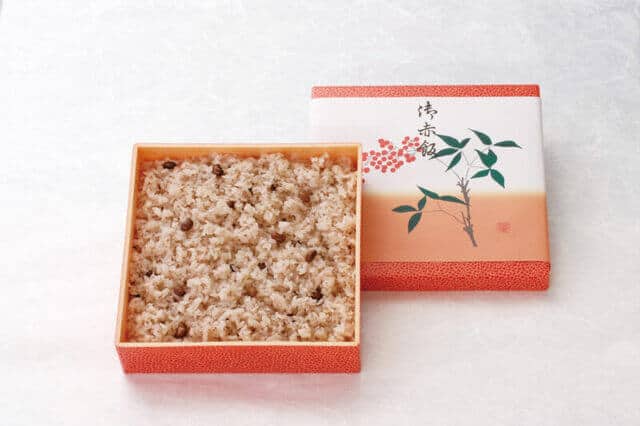
Aokiya Musashino Confectionery shop, renowned for its timeless dedication to traditional sweets, has an outstanding offering: sekihan. Priced at 790 yen per piece, each serving weighs a generous 300g and is rich with cowpeas’ natural hue and aroma. For those who appreciate packaging as much as the delicacy, Aokiya ensures a touch of elegance with their wood grain boxes, available for 300g- and 500g variants.
Fukujudo (福寿堂)
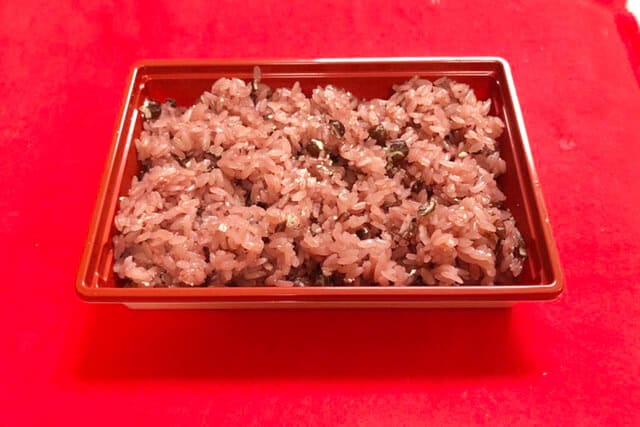
Fukujudo’s sekihan uses Hokkaido’s large red beans and Saga’s Hiyokumochi rice. It is also used in Michelin-starred Japanese restaurants and is a popular sekihan. You can enjoy red rice for entrance, graduation, and celebrations here. A store-bought pack of 400 yen (250g) is available at the store every day.
Jutokuan Co., Ltd. (株式会社 寿徳庵)
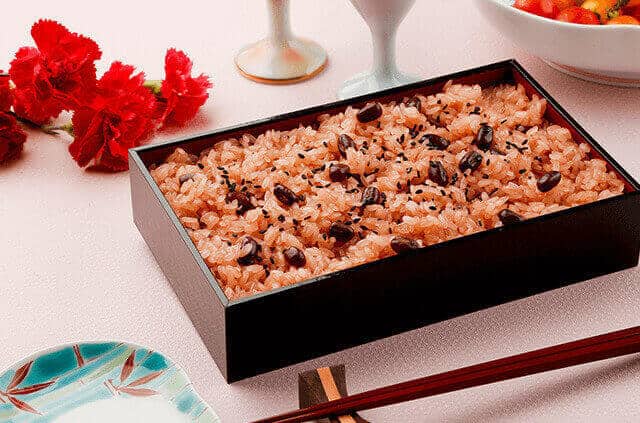
This shop blends two kinds of rice cakes for each season, mainly domestic Kogane mochi. Of course, it is 100% glutinous rice. Each piece is handmade and steamed using a wooden steamer. They also use “Tanba-grown Dainagon adzuki beans” harvested in the Tamba region of Kyoto Prefecture. The grains are large, the color is good, and there is a unique scent. They are about twice the size of regular beans.
For Online Shopping
For those who want to order or buy Sekihan in Japan, you can mail it to your home online on Rakuten. You can check out some shops that sell Sekihan via Rakuten by clicking below.
And for those who want to order or buy but live away from Japan. You can ship them from Rakuten by following the steps below. Rakuten offers International Shipping Service, so do not worry about how to receive your items. Rakuten Global Express is an online shopping service that allows users to shop at stores in Japan.
Sign up
First, you need a Rakuten ID. If you are already a Rakuten member, you can start using Rakuten Global Express. If you have not registered yet, click here.
Get your personal RGX address
After signing up, you will get a Japanese address: a Rakuten Global Express address.
Shop at stores in Japan
Now that you get yourself a personal RGX address (Rakuten Global Express address). You can shop online in Japan, click here to shop for Sekihan (not only Rakuten but other online stores are also included).
When you have decided on your items, set the delivery address to your Rakuten Global Express address.
Confirm items
After items are shipped to the RGX address, they will be packed into one package. You also receive an email upon confirming these items and payment.
Once the payment is confirmed, your package will be delivered within a designated period depending on your shipping choice.
Takeaway
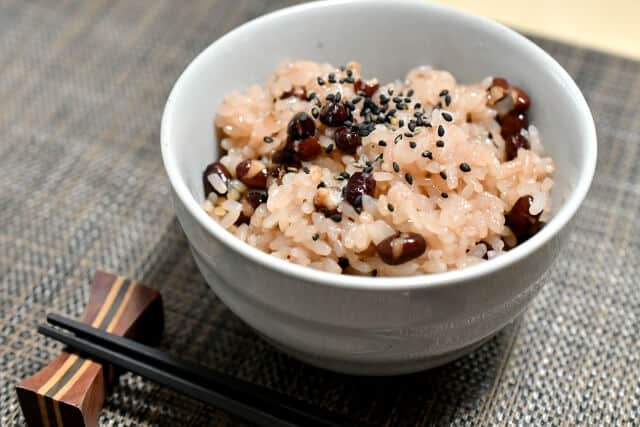
After looking into Sekihan’s story in Japan, readers have learned more than just about food. Sekihan is not just a dish; it’s a special sign of protection, celebration, and Japanese traditions. By getting to know sekihan, you understand important parts of Japanese customs and the close tie between food and big moments in life. It shows how much Japan values its history, even with all the new changes happening.
You can check some Japanese rice dishes that we know you would like to try too.

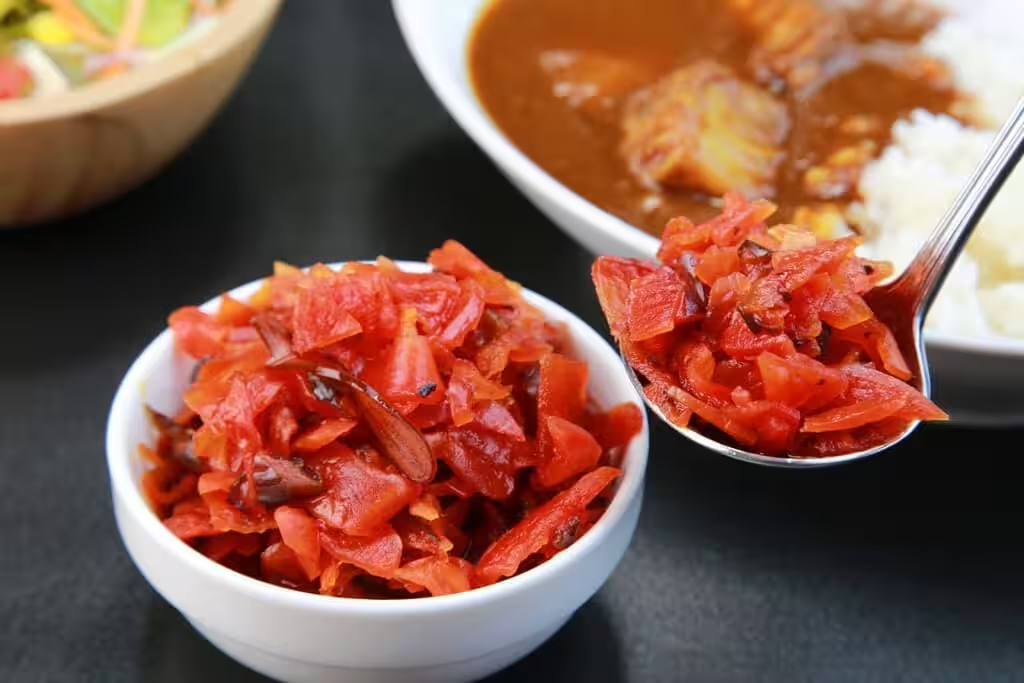
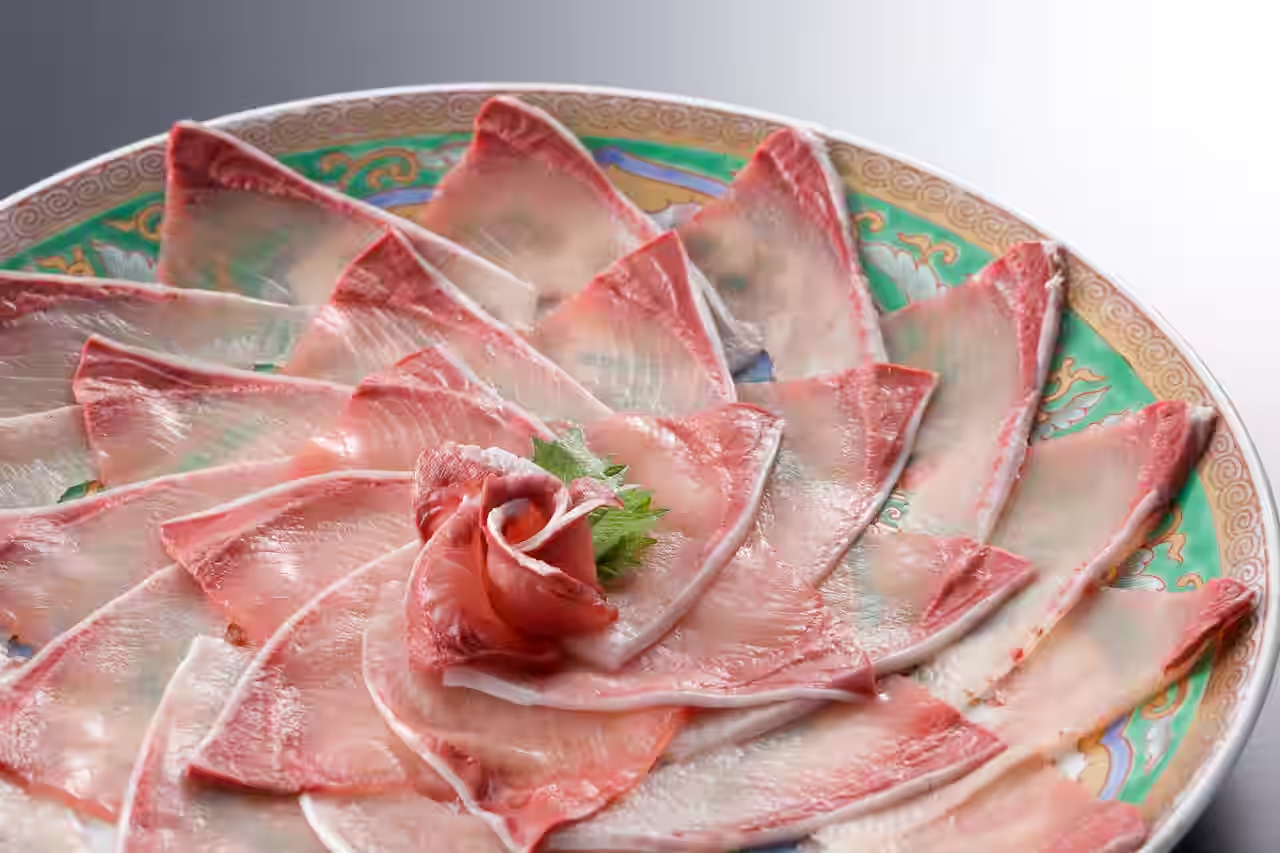
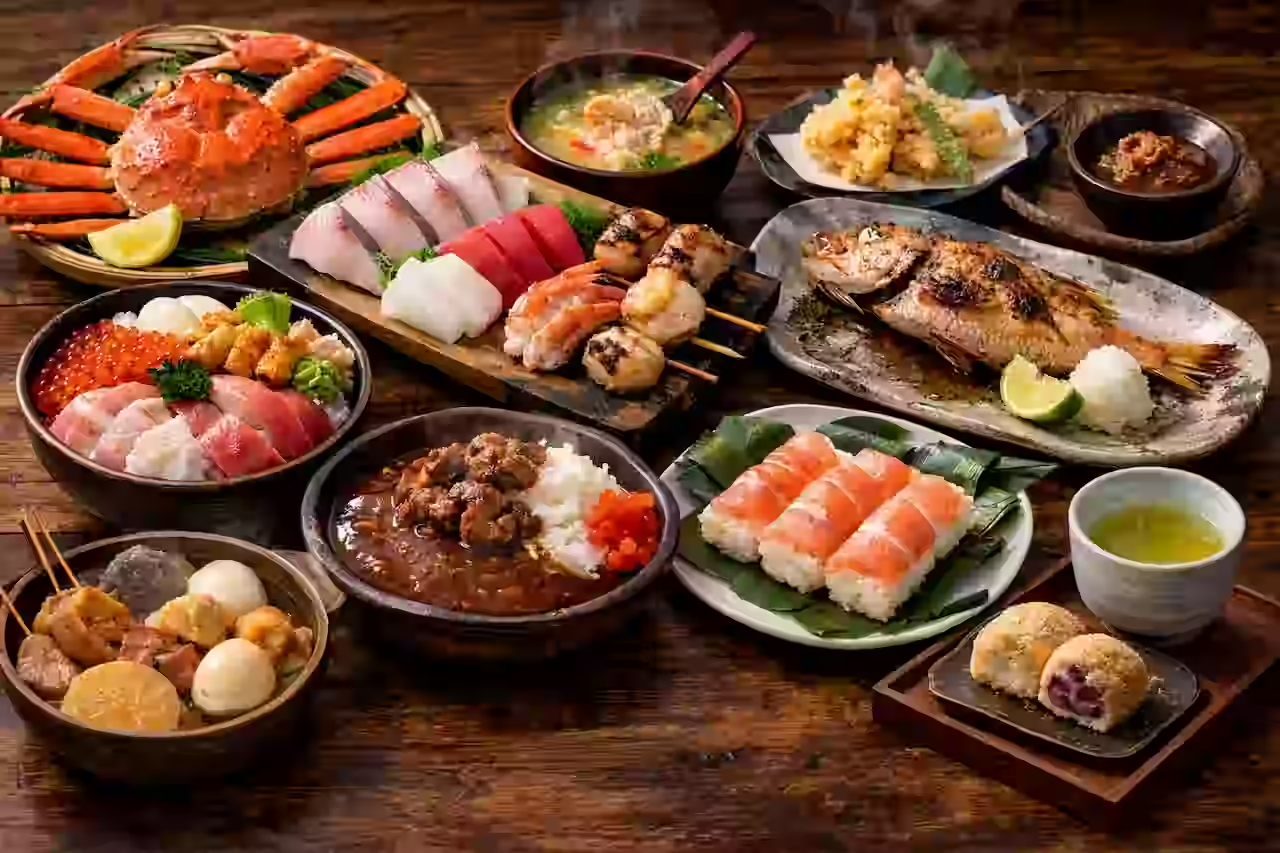


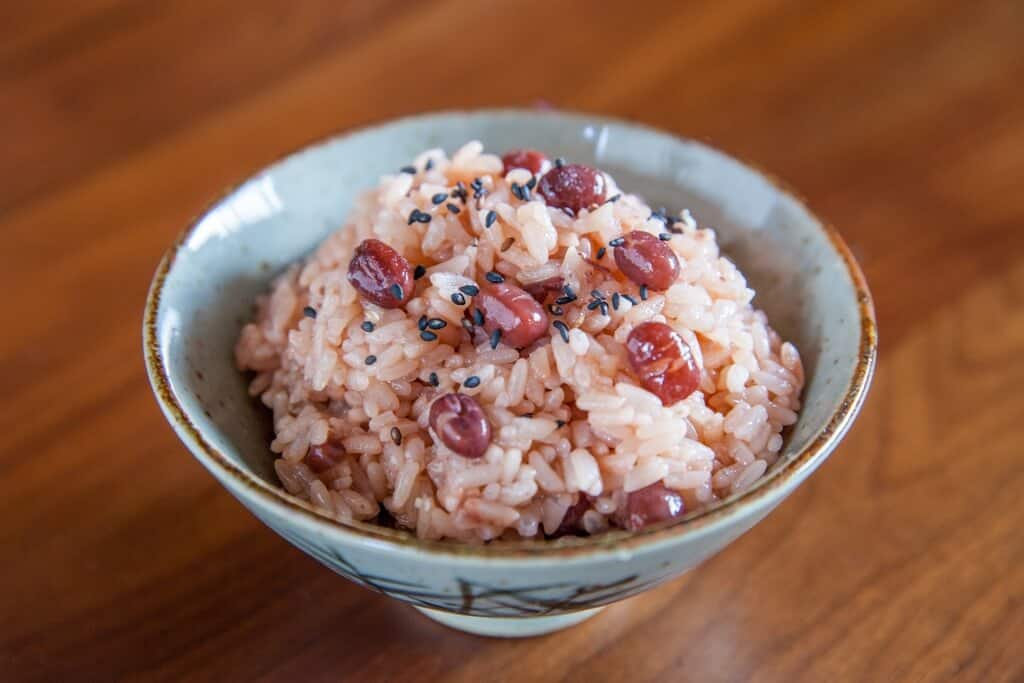
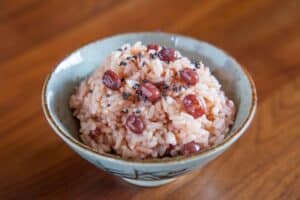
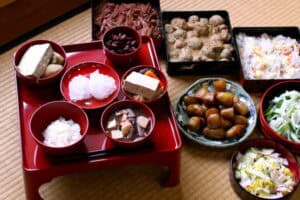
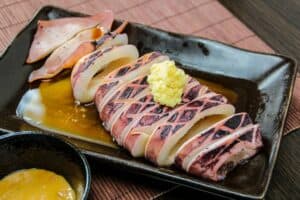

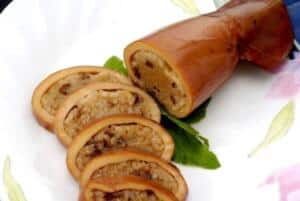
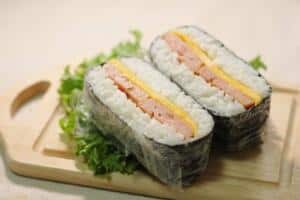
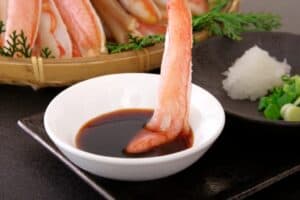

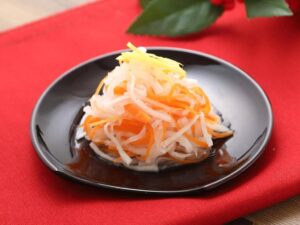
Comments